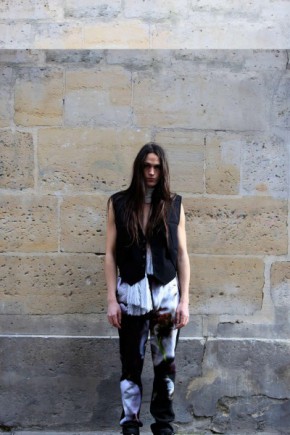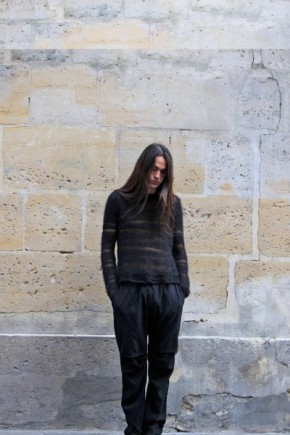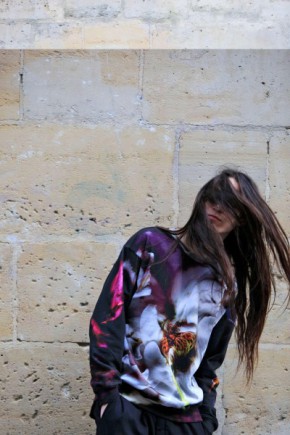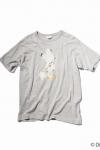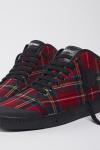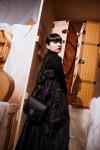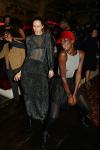“The brand must have something to say and it should come from the heart”
-What made you want to become designer?
My sister Anna & I have always been obsessed with images and objects, mainly fashion-related. Our parents encouraged us to read, draw, paint or whatever we could make up with our own hands. We started making some sort of “clothes” already as kids, but of course that was only one play among others. Also our mother had piles of fashion magazines and books and wore Comme des Garcons and Yamamoto already in the early 80s, so of course she must have been an influence as well. When I was a teenager I didn’t really think I had a choice and couldn’t really see myself studying anything but fashion after high school.
-What are the source of inspiration in your fashion design?
Of course there’s so many influences, but in the end we tend edit the massive research we do into a kind of obscure puzzle, where you can’t really tell where the inspiration is coming from. Individual sources of inspiration might change, but there are always same themes, which bind all of our collections together like androgyny, understatement, romance, melancholy etc.
-How did you get into fashion in the first place?
I’ve been involved in way or another for 16years already, it’s a bit scary. From the age of 15 to 18 I was modeling in London and Paris. That was the period when many great new menswear designers emerged like Raf Simons and Hedi Slimane, so it was a great time to be around. Then I did my BA in Helsinki, some internships in Paris and finally entered the MA Fashion Course at Central Saint Martins in London, which probably was the best and worst time of my life. Then I briefly worked in Paris before starting our own collection with my sister Anna.
-Do you feel that brand concepts and seasonal themes are important in expressing a collection image? How do you find and decide upon your themes for each season?
More than concepts or themes, I think it’s important that the designer stays true to him- or herself. The brand must have something to say and it should come from the heart. Of course there’s some things we’re excited about every season, but we tend to think that every collection should be an evolution from the previous one and that it should have real feeing and substance in it. We’re really not the kind of designers who are Preppie one season and go all Goth the next.
-How do you describe characteristic of your style which makes it difference from others?
I guess many young designers are very concerned about the overall look. They want to have a strong show, but often forget the product, when it becomes more about styling than design. We are very product-orientated compared to many others, sometimes even too much. Our language is very subtle in the end, so everything has to be executed as well as possible. The style is the style we dress ourselves; androgynous, melancholic, a bit dark, but still romantic. I think also that many designers today are very much one note, where as we’d like to think at least that our work is a bit more mysterious and layered with multiple influences.
-Do you view fashion design as a means of expressing yourself?
Of course in to certain point it is about expressing oneself and sending out messages and suggestions to others. But in the end it’s also about serving your customer and creating functional objects, which survive every day life. In the end there’s very little romance left in the whole process.
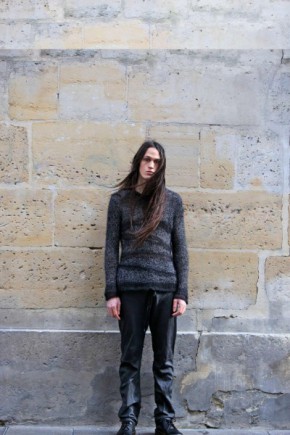
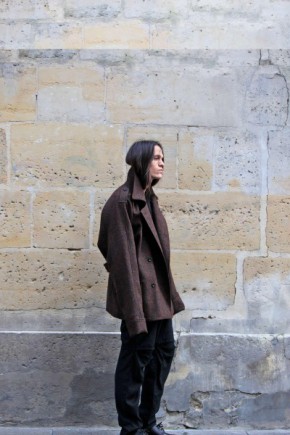
-What are the most important factors when you approach your work?
The biggest question is would I wear it myself and does it really come from our world. Because, if I’m not able to stand behind the collection I guess nobody else would believe in it either. Then of course we’re very meticulous about fabrics, finishes and the overall quality. But even the best quality is not enough; if the item or the whole collection has no soul. Every product should create some kind of emotion in both our customers and us.
-What do you think was the greatest turning point for you as a designer so far?
Our career has evolved quite slowly and that’s how we’ve liked it. We’ve grown the collection bit by bit over the years and have been very happy to have worked with a lot of great buyers, stylists and fashion editors, who have believed in us from very beginning. Of course Festival d’Hyerès enabled us to start our business in 2006, but it’s very difficult to name one tuning point, maybe it’s still to come.
-How is the fashion scene like in Scandinavia? Dp you have any favourite designer?
The fashion scene is bit too trendy to my liking nowadays in Scandinavia. Before it was more individual. It’s a very wealthy part of a world and even young people can afford to buy designer labels. I’m just not sure if they’re spending their money on Ann Demeulemeester boots for the right reason. There’s not that many Scandinavian designers working in high fashion with their own labels and we don’t really follow streetwear or denim labels. Out of Nordic designers we like Ann-Sofie Back and the original Marimekko and Vuokko from the 60s and 70s. From the international scene we’ve always loved the usual mix of Belgian and Japanese designers plus people with really strong product like Carol Christian Poell and Helmut Lang (the man himself, not the current label). Lately we’ve been drawn to late 80s and early 90s Romeo Gigli and Jean-Paul Gaultier, so I don’t really know what’s happening with us. We’re also big collectors of vintage uniforms and workwear.
-Do you find Finnish roots in your design?
I guess there’s always a certain simplicity and understatement, which is characteristic to Finnish design in all areas including furniture and architecture. Finnish people also tend to be quite could at making prints. When we started we swore not make any prints, but nowadays one 3rd of the whole collection comes with patterns and they’ve become one of our trademarks.
-Is there any designers or person that had a strong influence of your work?
Our mother, my boyfriend Chris, Vuokko Nurmesniemi, Ann Demeulemeester and Morrissey.
-How would you describe your customer? What do you think your fans seek in your clothing?
Our customer is quite ageless and we love that. We have both kids and people up to 50 or 60 as customers, which is great. I guess our customers are drawn to our aesthetic, they might like a bit of darkness and listen to the same sad songs we do. They might also just want a nie made jaket or a sweater of course. A lot of people also like discovering something new, since we’ve been rather quiet about our work and let the clothes to speak for themselves. What we also love is that a lot of customers keep on wearing our pieces from one season to another.
-How do you see your brand developing over the next couple of years?
Hopefully we’ll still be doing what we love to do, possibly for a slightly wider audience.


